Previously on this blog, I’ve mentioned the diamictites of the Konnarock Formation, the Rockfish Conglomerate, and the Fauquier Formation.
There is another probable glaciogenic unit in the Virginia Blue Ridge: the Mechum (pronounced “Mitchums”) River Formation, which crops out in a narrow belt in the central part of the Blue Ridge Anticlinorium, overlying basement rocks (gneiss, more or less). I visited it last week with Chuck Bailey from the College of William and Mary, my student Josh Benton, and three of Chuck’s students.
It starts out with a clast-supported diamictite at its base:
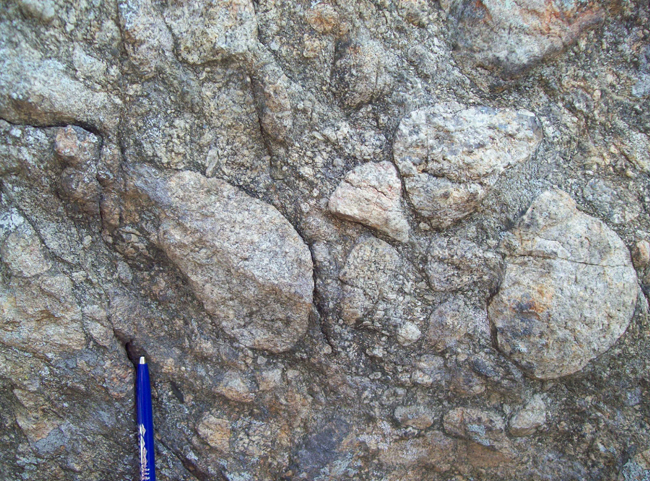
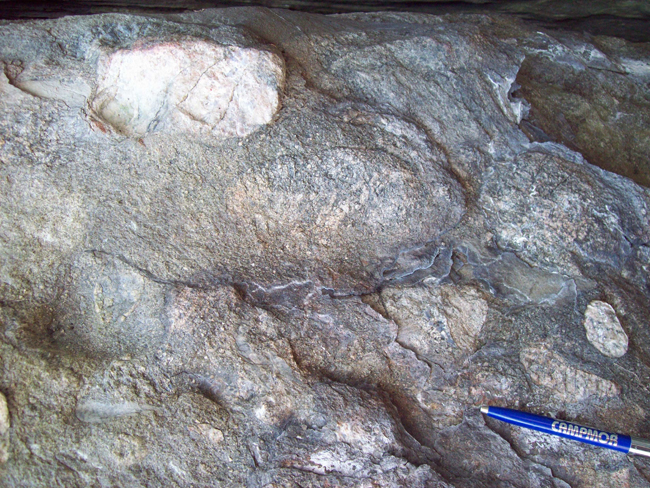
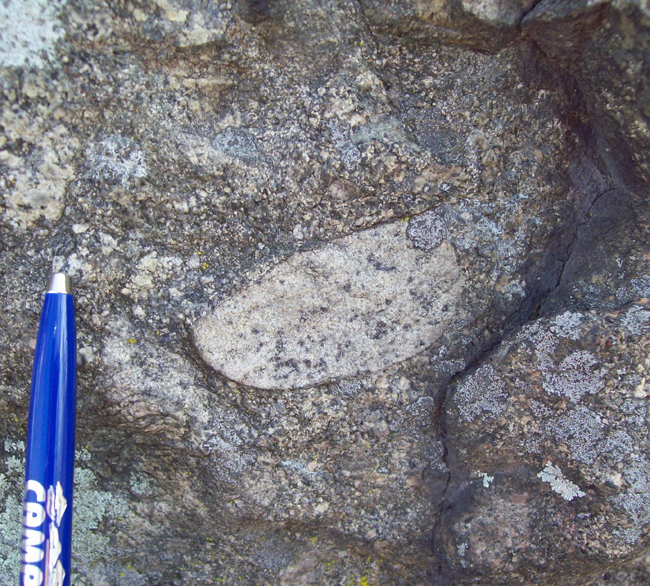

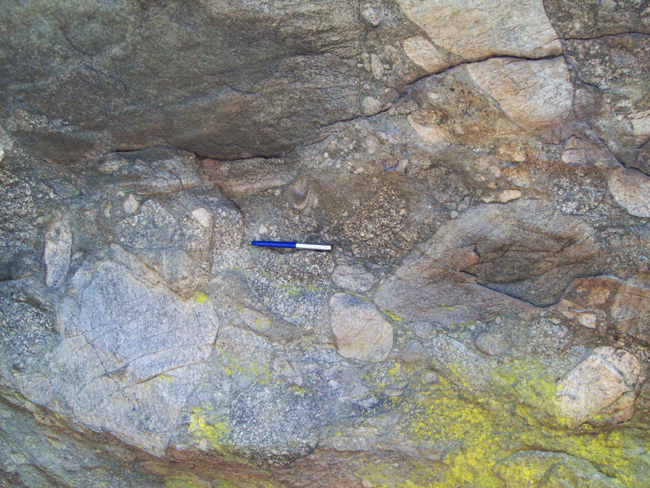
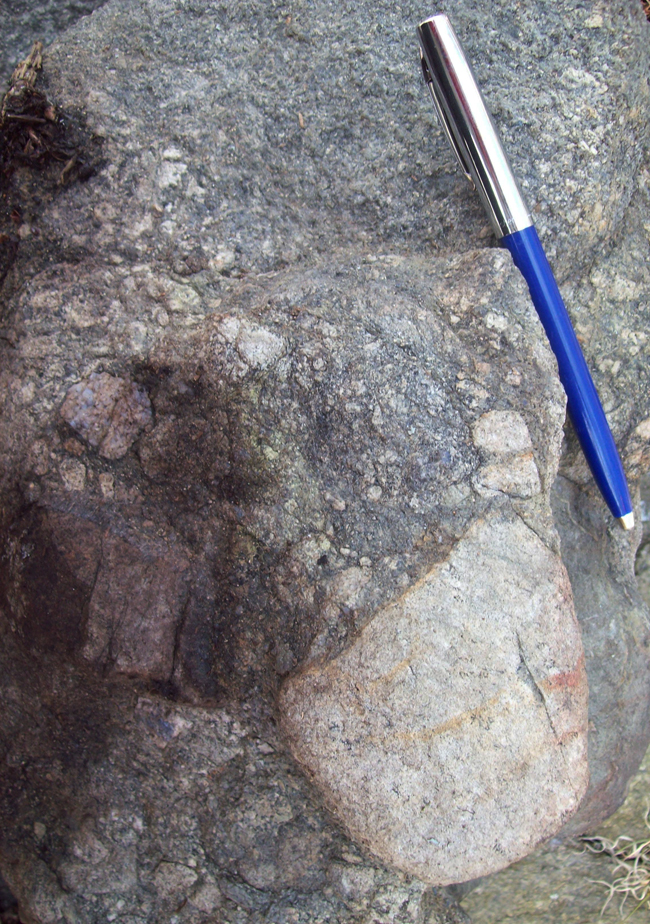
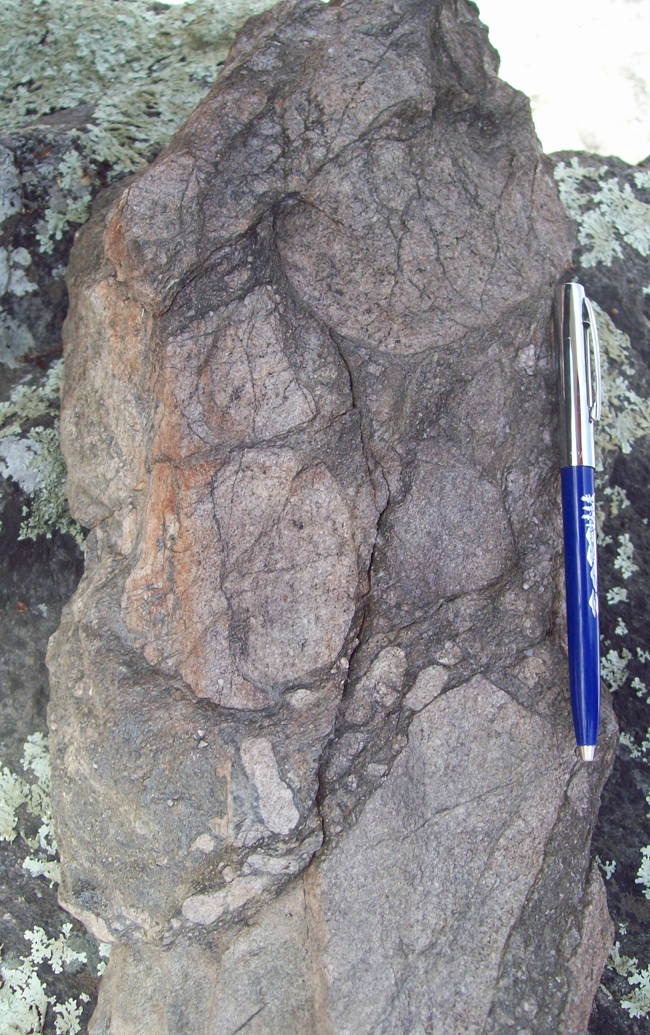
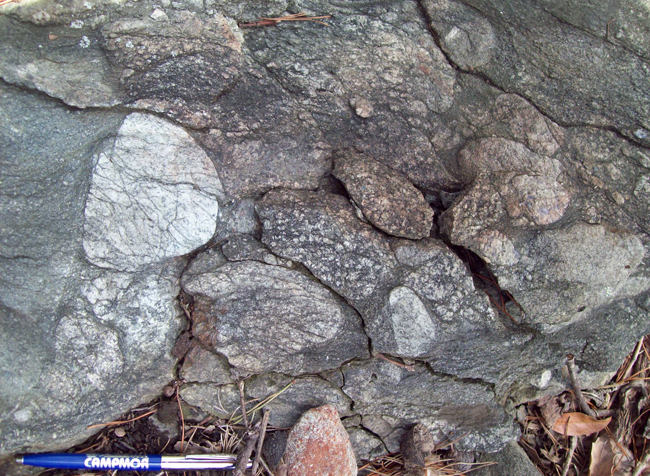

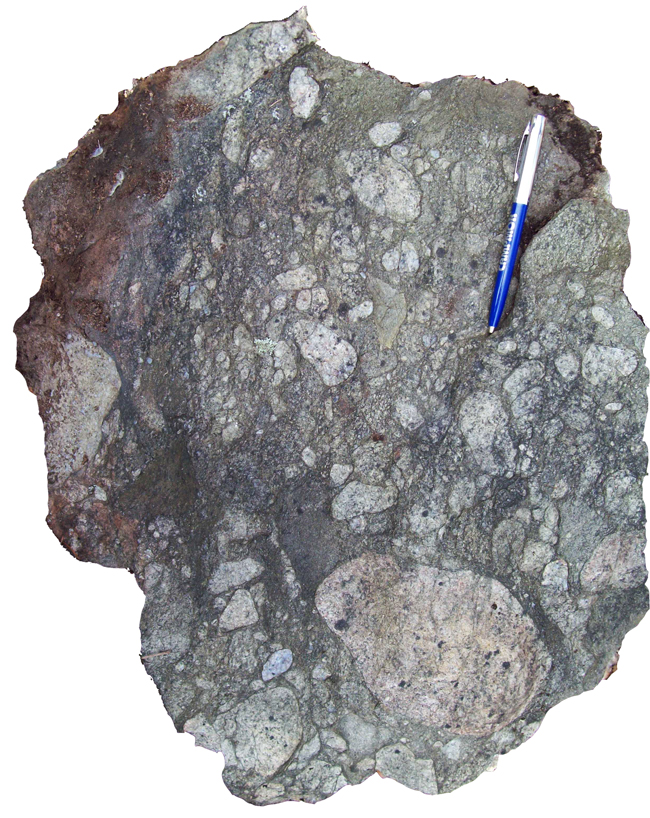

There’s some nice deformation to be seen in this clast:
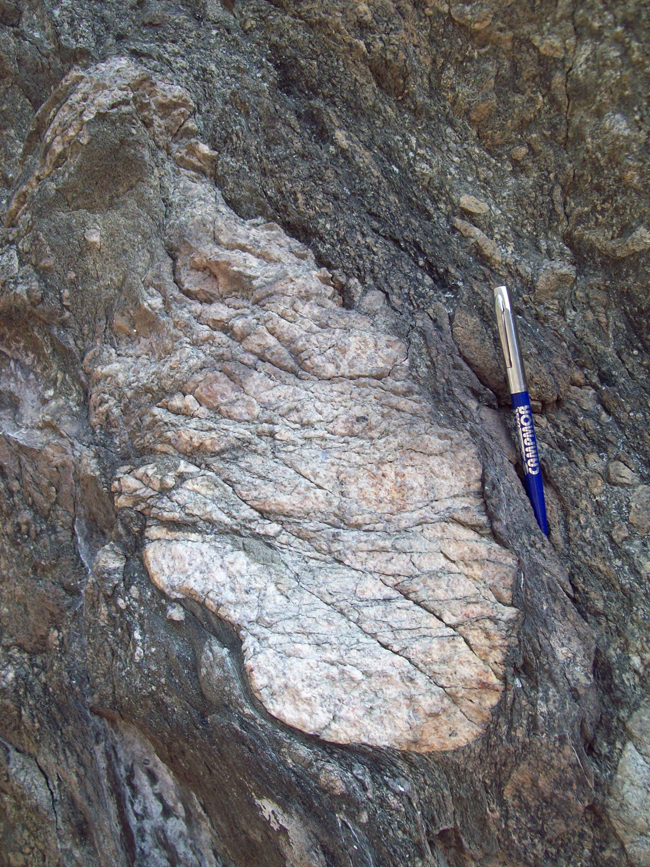
Zooming in for a good look at small offsets along small faults, changing the clast’s shape and aspect ratio:
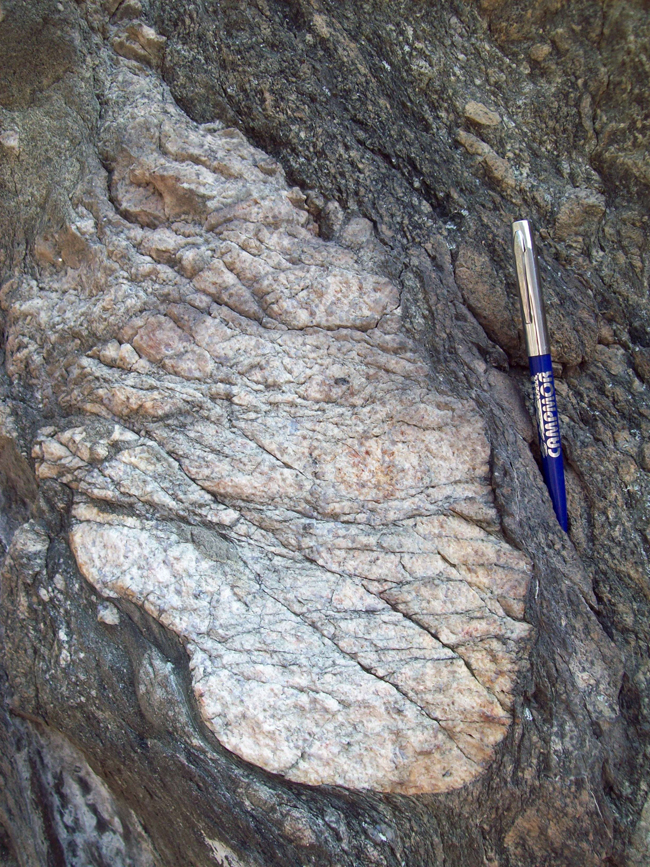
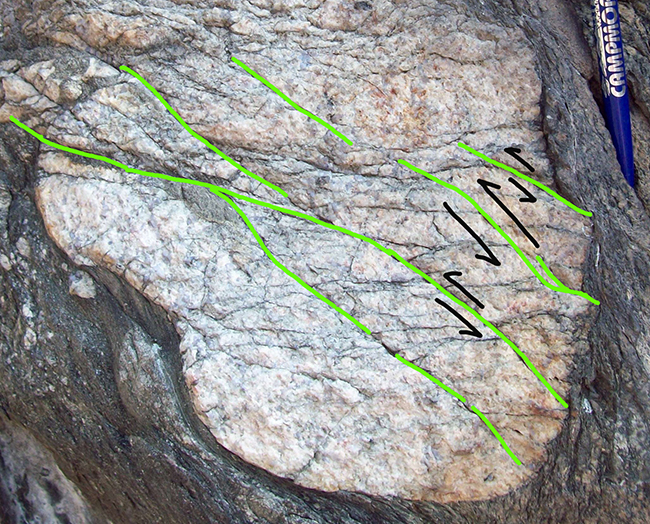
Note how foliation wraps around it at the base:
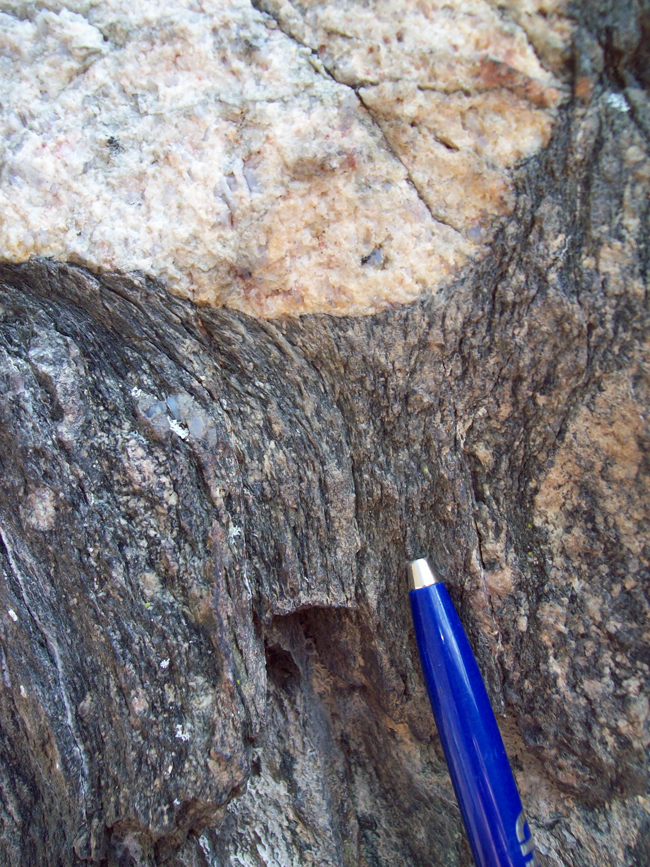

Higher in the sequence, you can see a much finer general aspect to the deposit, including continuous strata of laminated sands.
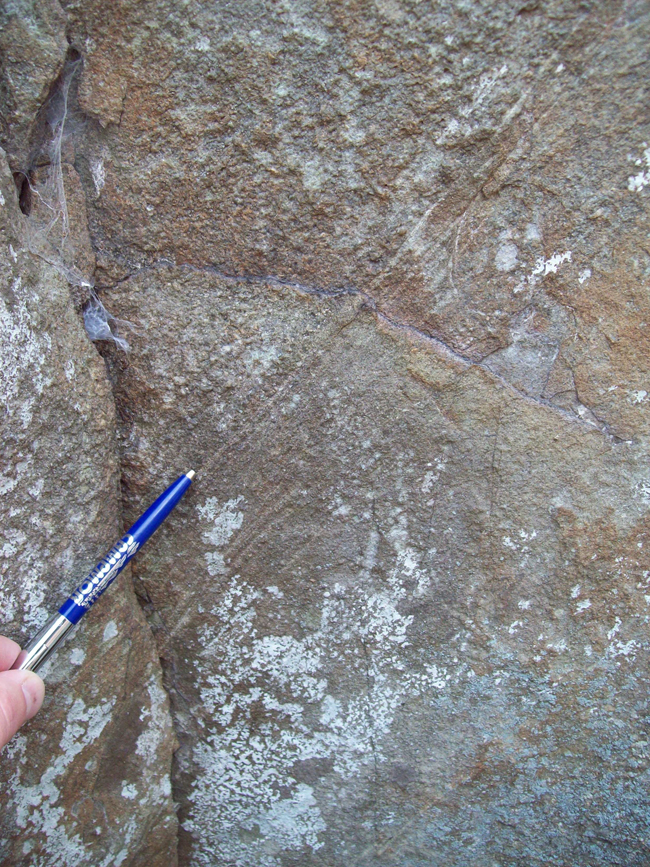
But the big clasts haven’t disappeared. They are now isolated and less common in general, though when they occur, they tend to occur in the same horizon:

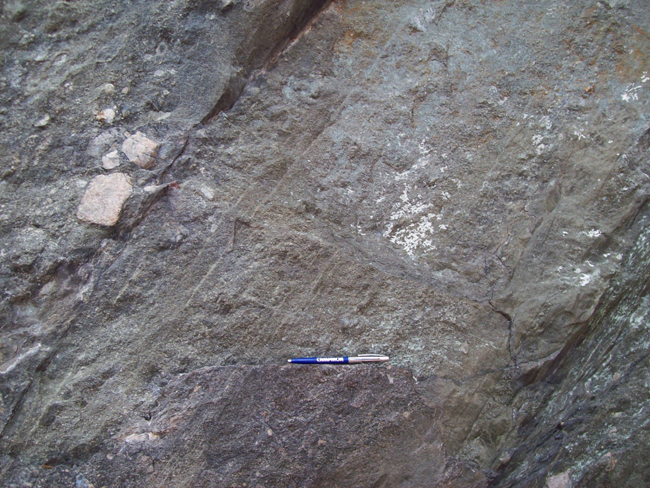
Bailey and Peters (1998) interpret these sediments as glaciogenic — that is, deposited under conditions that were influenced by glaciers, perhaps those pesky Snowball Earth glaciers we keep hearing about. Specifically, they think there might be discernible annual seasonal rhythyms in these sediments coarse vs. fine grain size.
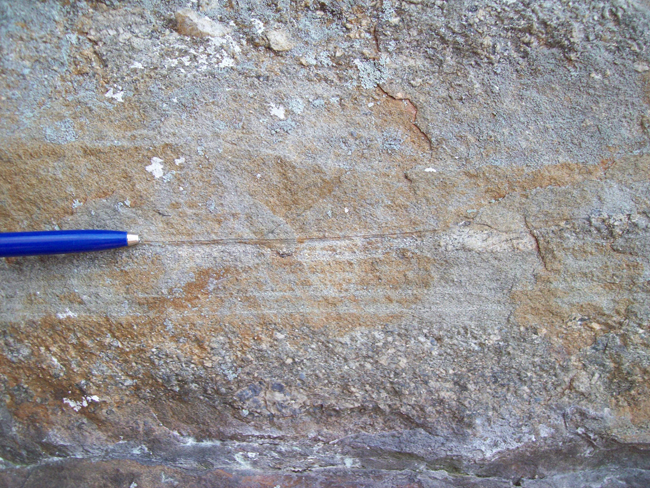
During the summer warm season (or perhaps during longer-duration interglacial periods) the ice melted, the water flowed, the icebergs calved, and all of this is recorded with a switch from finer sediment to coarser, in particular the presence of outsized clasts (putative dropstones):

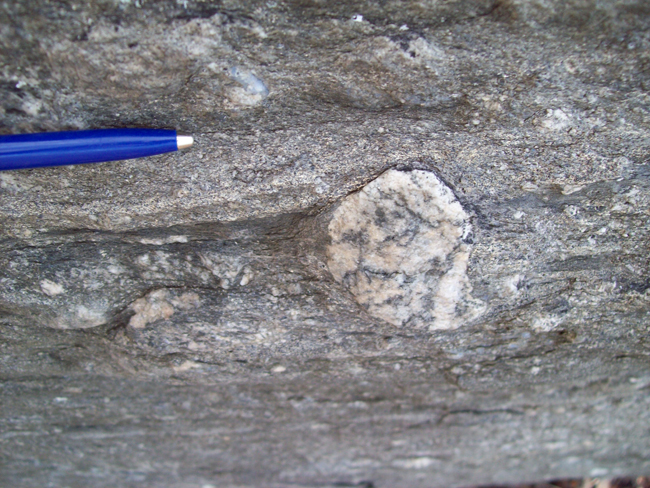
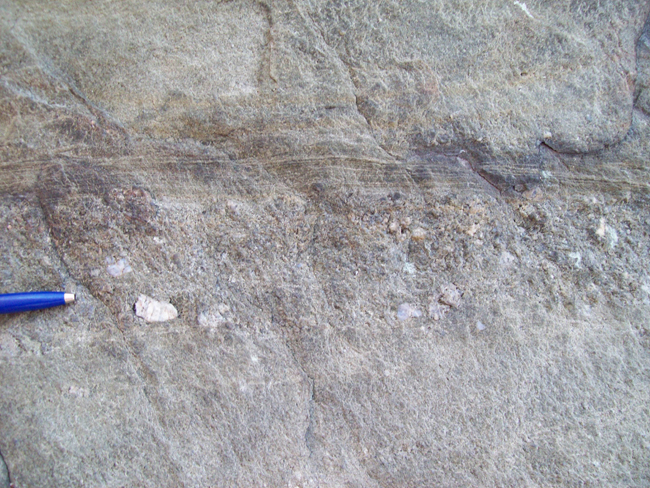
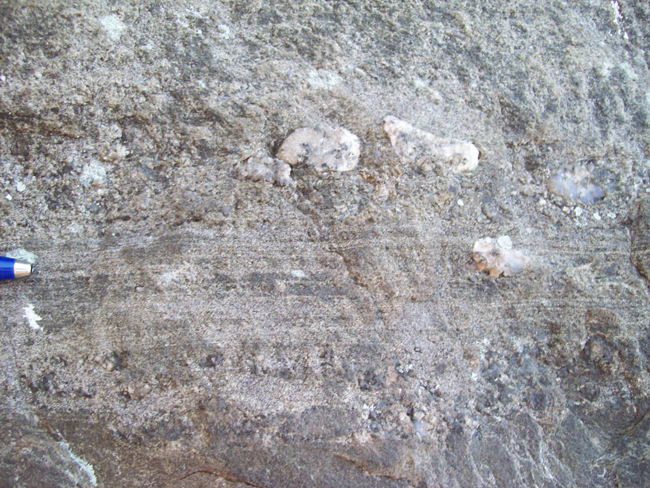
Note the cross-bedding at the bottom of this one:
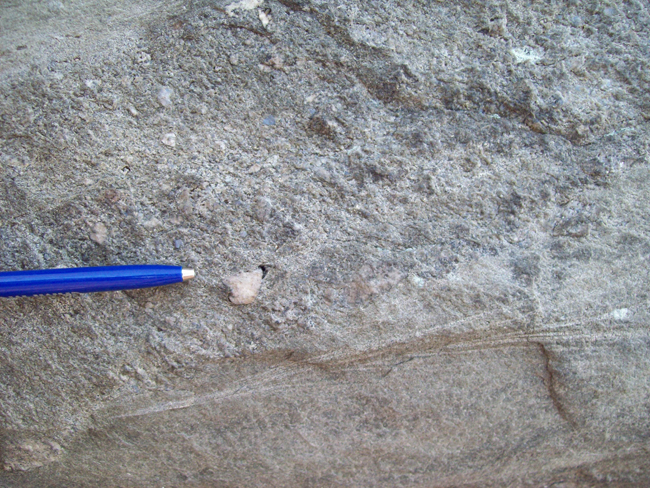
Taken together, these sedimentary deposits of the Mechum River Formation give me a proverbial shiver – proximity to glacial ice tends to do that to me, even if at a temporal remove of ~600 million years…
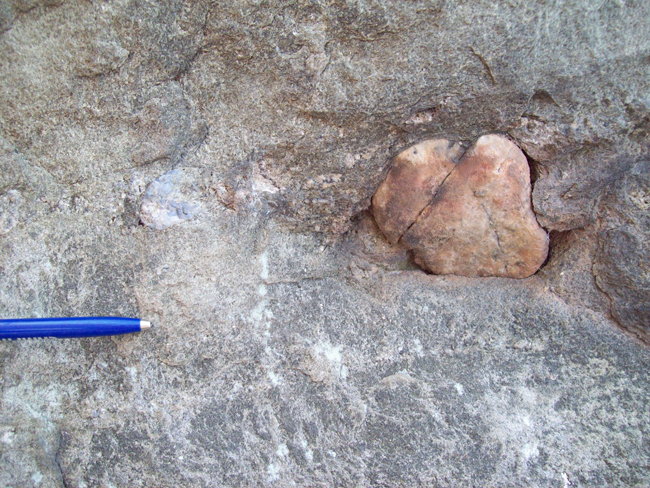

…Magnificent! and the interpretation fits well 😉
Yes is quite a marvel of history we’re reading right there. 🙂
Most of the clasts seem rounded as though they were tumbled in a high energy environment. Is the clay from glacial flour? This seems reminiscent of a lahar that came down from Mt. Rainier, WA.